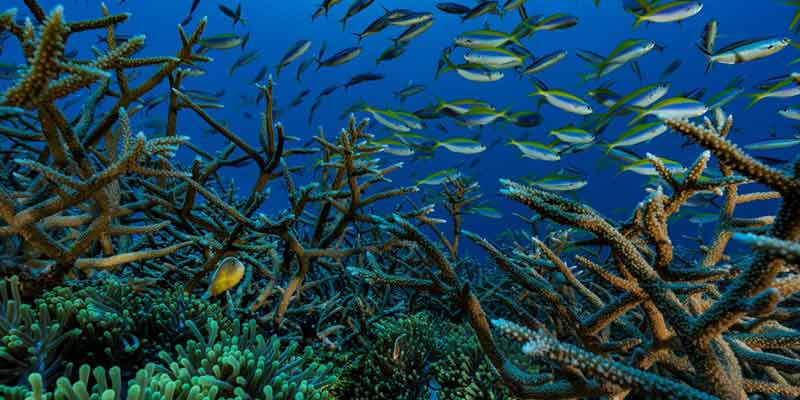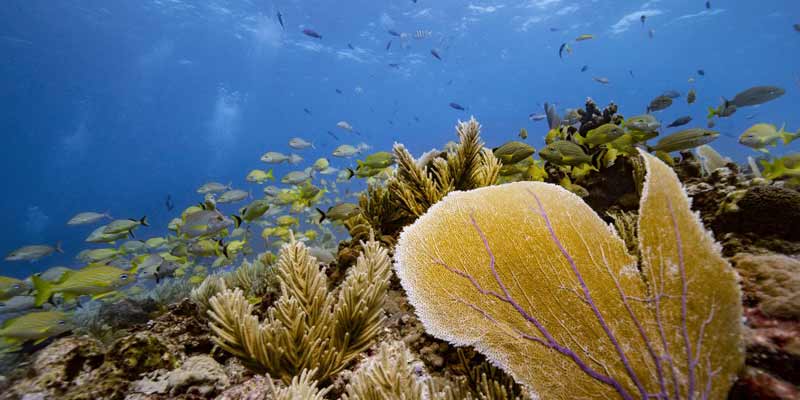- World
- Mar 06
Explainer - UN High Seas Treaty
• The UN member states have agreed to a text on the first international treaty after years of negotiations to protect the high seas.
• The agreement reached by delegates of the Intergovernmental Conference on Marine Biodiversity of Areas Beyond National Jurisdiction (better known as BBNJ) is the culmination of UN-facilitated talks that began in 2004.
• Now that the negotiations are over, the agreement shall enter into force once 60 States will have it ratified.
• Referred to as the ‘High Seas Treaty’, the legal framework would place 30 per cent of the world’s oceans into protected areas, put more money into marine conservation, and covers access to and use of marine genetic resources.
• The new treaty will allow to establish large-scale marine protected areas on the high seas, which are also necessary to meet the global commitment of the Kunming-Montreal Global Biodiversity Agreement concluded last December to protect at least 30 per cent of the ocean by 2030.
• For the first time, the treaty will also require assessing the impact of economic activities on high seas biodiversity. Developing countries will be supported in their participation in and implementation of the new treaty by a strong capacity-building and marine technology transfer component, funded from a variety of public and private sources and by an equitable mechanism for sharing the potential benefits of marine genetic resources.
What are the high seas?
• The high seas provide invaluable ecological, economic, social and food security benefits to humanity and are in need of urgent protection.
• The high seas begin at the border of countries’ exclusive economic zones, which extend up to 200 nautical miles (370 kilometers) from coastlines. They thus fall under the jurisdiction of no country.
• Even though the high seas comprise more than 60 percent of the world’s oceans and nearly half the planet’s surface, they have long drawn far less attention than coastal waters and a few iconic species.
• Ocean ecosystems create half the oxygen humans breathe and limit global warming by absorbing much of the carbon dioxide emitted by human activities.
• But they are threatened by climate change, pollution and overfishing.
• Only about one percent of the high seas are currently protected.
• When the new treaty comes into force it will allow the creation of marine protected areas in these international waters.
• Although more ambitious measures will be needed, this legally-binding agreement marks an important step towards protecting the two-thirds of the ocean that lies beyond national jurisdiction.
BBNJ under UNCLOS
• The UN Convention on the Law of the Sea (UNCLOS), which entered into force on November 16, 1994, sets forth the rights and obligations of states regarding the use of the oceans, their resources, and the protection of the marine and coastal environment. Although UNCLOS does not refer expressly to marine biodiversity, it is commonly regarded as establishing the legal framework for all activities in the ocean.
• Following more than a decade of discussions, the United Nations General Assembly in its resolution on December 24, 2017, decided to convene an inter-governmental conference to elaborate the text of an internationally legally binding instrument under UNCLOS on the conservation and sustainable use of BBNJ, with a view to developing the instrument as soon as possible.
• This ‘Biodiversity Beyond National Jurisdiction’ treaty, agreed at the 5th Intergovernmental Conference in New York, is the fruit of more than a decade of global engagement to find solutions for this crucial global environmental issue.
• The new agreement will further implement existing principles in UNCLOS to achieve a more holistic management of activities carried out in the high seas. These principles include the duty to cooperate, to protect and preserve the marine environment and to undertake prior impact assessment of activities.
• This agreement is the third of its kind following specific agreements on seabed mining in 1994, and the management of straddling and highly migratory fish stocks in 1995. The new agreement would bring UNCLOS up to speed with the developments and challenges that have occurred since it was developed thirty years ago and would further support the achievement of the Agenda 2030 for Sustainable Development, in particular Sustainable Development Goal 14 (‘Life Below Water’).
Manorama Yearbook app is now available on Google Play Store and iOS App Store


